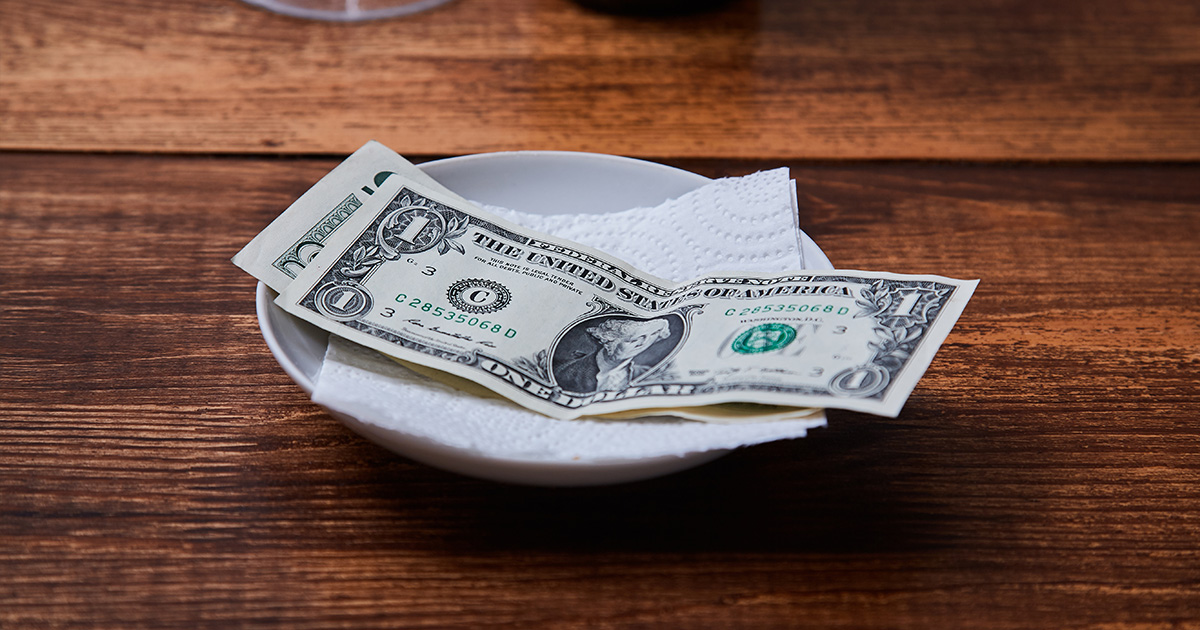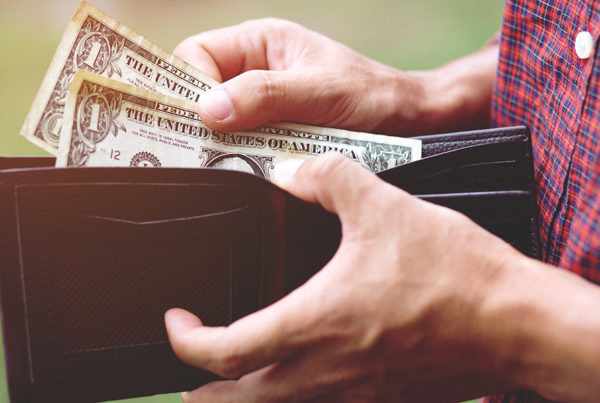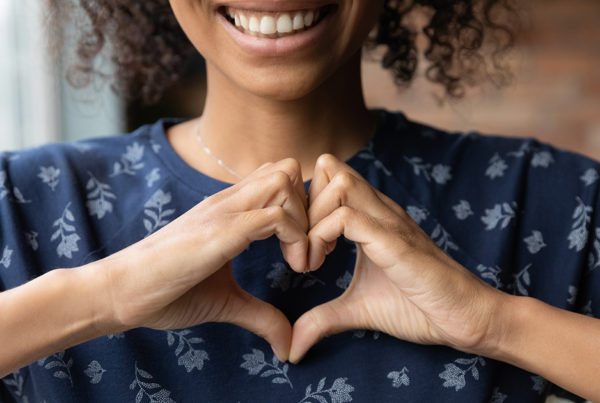You’re sitting in a restaurant (maybe not right now, but someday), and you’ve just enjoyed a wonderful meal. The bill arrives and dun, dun, dun…now you have to figure out how much to tip.
For some people, it’s straightforward. They always do 20%, which is pretty easy if you use a little trick. Say your bill is $33.72. To find 10%, you just move the decimal over one spot to the left, which in this case is $3.37. Then you multiply that by two, and you get $6.74. Add that to $33.72, and there you go!
But what if you received poor service? What if you’re at a hair salon or a hotel or in an Uber? Do you tip before or after tax? Tipping, or including a gratuity, can be tricky to figure out, so we’ve put together a guide for tipping in various situations.
General Tipping Guidelines
- Tips were originally offered as a ‘thank you’ for good service and possibly as a ‘down payment’ on future service. Now, they are standard in many situations.
- Tips usually range from 10 to 20% added to a total bill, or a flat amount of $1 or more.
- Workers in many industries, like restaurants, make less than minimum wage at just $2.13 per hour. Tips are meant to make up the difference, which can lead to some controversy.
- While tipping is technically optional, in some cases it’s really not (like restaurants).
- If you receive poor service, still leave a small tip because mistakes and rough nights sometimes happen; you might consider giving your server or the manager feedback (respectfully and politely) so they understand why you were unhappy. And remember, your server is not making your meal, so they are not in control of how your food tastes.
Dining Out
- Tips range from 10% for okay service, to 15% for average service and 20% for great service
- While you can technically tip on your bill ‘pre-tax,’ that can seem a bit ‘cheap,’ so if you can afford it, go ahead and tip on the full bill.
- At a buffet or fast casual restaurant where you don’t have a server but people still help you by bringing food or clearing your plates, it’s polite to leave 10% or a few dollars on the table.
Dining In
- For takeout, add a 10% tip for the people who took the time to assemble and package your food (which can take a while with all the separate containers and condiments).
- For delivery, they’ve waited at the restaurant, dealt with traffic and brought your food to you while still hot, so a few dollars or 10% (in addition to the delivery service fees, because those may not go to the driver) is a nice gesture.
- While relatively new, tipping for grocery delivery is still a bit undefined, but if the person took the time to select all your groceries and even found good substitutes for items that were out of stock, then 10 to 15% is great.
Future Happy Hours
- If you’re just having drinks at a bar, rather than calculate a percentage, leave $1 for a soda or beer and $2 for a cocktail or drink the bartender has to make.
- If you order food at the bar, tip a percentage of the bill like you would at a table.
- For your morning, afternoon or all day coffee, some change or a dollar in the tip jar that’s usually on the counter is polite, especially if your beverage took some time to make.
Transportation
- For a taxi ride, tips are usually 15 to 20% of the total fare.
- For an Uber or Lyft ride, try to tip at least $2.
- In either case, if you felt unsafe or the driver was impolite, then you don’t have to tip. On the other hand, if the driver helps with your bags or goes above and beyond, an extra few dollars is nice.
- If the airport or hotel shuttle bus driver hauls your bags for you, tip $1 to $2.
Traveling
- While less common, it’s good etiquette to tip your housekeepers during a hotel stay. This can range from $2 to $5 depending on the level of hotel. If you’re staying for more than one night, tip each day since you may not have the same cleaner.
- If the concierge or bellhop carries your bags or gives you quick directions, tip a dollar or two. If they help you plan a day’s outings and get you into a popular restaurant, tip more, even $5 to $10.
- For the coat check at a museum or theater, $1 per coat is a good rule of thumb.
- If you can see your car when the valet goes to get it, $1 or $2 is sufficient. If they have to run several blocks, trek through a parking garage or the weather is particularly unpleasant, then $3 to $5 is best.
Personal Service
- At a nail or hair salon or spa, your stylist or massage therapist has (hopefully) provided you a refreshing and luxurious service. Tipping 15 to 20% is standard, and this is a good place to be generous if you plan to see the person routinely!
- Another time to tip well is for a babysitter or nanny, but this can vary more. If they had a particularly rough night or took on extra tasks like cooking and cleaning, then 10% can be a nice gesture. For a nanny or babysitter who is a regular for your family, a bonus around the holidays can be a great perk.
- If you have people packing and/or moving your household, and especially if they are efficient and take good care of your stuff, then $20 to $40 per mover (depending on the amount of time and work) at the end of the move is a good ‘thank you.’ You can also show appreciation by providing lunch, snacks and bottled water.
Two Final Thoughts
- Tipping is an opportunity to show appreciation and be generous. If you’re able, you can never go wrong with offering a gratuity.
- If you are out of cash and can’t offer a tip, an apology and sincere thanks can go a long way. In situations where you aren’t supposed to tip or you just aren’t sure, compliments and appreciation can still convey your gratitude.






 Federally Insured by NCUA |
Federally Insured by NCUA |  Equal Housing Opportunity |
Equal Housing Opportunity |